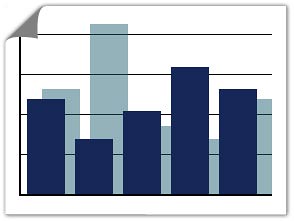 Back in March, we caught wind of Metro's plans for stimulus money, and over the weekend, the Washington Post fleshed out the details.
Back in March, we caught wind of Metro's plans for stimulus money, and over the weekend, the Washington Post fleshed out the details.Below is the breakdown of Metro's shopping list. What do you think? How far will all this money go toward unsucking Metro? Looks like a pretty mixed bag to us.
Seems a little odd to spend twice as much on a garage bathroom rehab than on a welding program to fix track defects.
Also, the Red Line, in particular seems to have been plagued lately with switch malfunctions, a remedy to which is not apparent on the list.
Supposedly, you can keep an eye on Metro's spending via their stimulus accountability site.
• Replacement of oldest buses - $27M
• MetroAccess expansion, replacement - $3.8M
• Service vehicle replacement - $6M
• Bus replacement components - $2.8M
• New bus body and paint shop - $30M
• Replacement of southeastern bus garage - $30.6M
• Bus garage restroom rehabilitation - $7.6M
• Replacement of crumbling platforms - $16M
• Update platform real-time signs - $2.5M
• Metro Center sales office replacement - $1M
• Bus garage security upgrade - $3M
• Equipment for operations control center - $3M
• Emergency tunnel evacuation carts - $1M
• Underground communications radios - $1M
• Additional station alarm/chemical sensors - $4M
• Heavy duty locomotives for maintenance - $7M
• Power tool equipment replacement - $1.9M
• 60-ton crane for track work - $4M
• Heavy-duty track equipment - $11.6M
• Track welding program to repair defects - $3.9M
• Track pad/shock absorber rehab - $1M
• Upgrade 3 oldest stations and systems - $12M
• Additional SmarTrip fare machines - $3.5M
• Bus real-time, route and schedule systems - $3M
• Bus engine fluid alert system - $1.5M
• Kiosk and train control computers - $0.8M
• Sensitive data protection technology - $4.9M
• Document management system - $2M
• Financial system integration - $5M





















 Oct. 11, 2012
Oct. 11, 2012 February 21, 2012
February 21, 2012 March 4, 2010
March 4, 2010





3 comments:
nothing about escalators?
Where's the line that says, "Getting the Metro to actually run effectively---priceless."?
In light of the over $150 million stimulus metro recently received, it is highly disappointing that passengers continue to experience delays every weekend, and freqently during the week. What is more disappointing is that passengers are charged full price when they frequently spend no less than 20 minutes waiting for a train(I myself have waiting over 40 minutes for a single train before). Living on the orange line is a nightmare- I have lived near the Dunn Loring metro for over a year and a half and cannot remember there NOT being a delay on a weekend. What should be a 20 minute trip to Arlington turns into an ordeal of over an hour, between the excessive wait of over 25 minutes, and freqent "holdings" at stops along the way. I do not understand why passengers do not receive a deep discount for these delays, especially when WMATA plans maintenance every weekend and knows passengers will experience these delays. In these difficult financial times, metro's extremely high fees, combined with the long waits, make driving the more economical mode of transport- a development I find highly disappointing. Why is it that passengers waiting over 20 minutes for a train must pay, in some instances, nearly $5 one way? They should ride for less than half that. Metro is supposed to be an affordable, green alternative- and it is cleraly failing in its goals. It is difficult to understand why the rest of America's major cities have cheaper, more complicated, and more efficient systems. From Detroit to New York to Chicago, to to far flung Kyiv, Ukraine, I have experienced cheaper, more efficient systems. Metro's Manager has just won the APTA’s Outstanding Public Transportation Manager Award, yet it seems he may need to take a page out of other cities' books. With one of the most expensive systems of the country, passengers on the DC area metrorail expect delays and no shows to be the exception, not the rule.
At approximately 1:30 on the afternoon of Sunday, June 7, I waited for more than 25 minutes for a train at the Dunn Loring station, watching not one, but two trains go through the station, even though one was clearly marked as accepting passengers headed towards New Carrolton. That I was charged $1.35 for my fruitless efforts when I finally gave up and left the station is simply adding insult to injury and I find it both disappointing and poor business practice to charge passengers to wait for trains that never come. Although I questioned the station attendant about this manner, I was simply told that that was the way the system worked, and I was free to pay again and wait for the next train. In light of the difficult financial times and generous stimulus package metro received courtesy of we, the taxpayers, I think it is time for metro to give passengers a break and discount rides with excessive delays.
Post a Comment